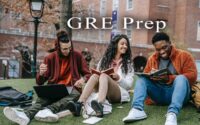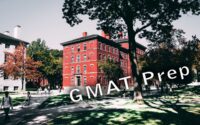Profit and Loss Questions Answers
Here, we are providing the Profit And Loss Basic Questions Papers PDFs. Interested applicants can click the link to download the Profit And Loss Aptitude Question Solved Papers. With the practice of these Profit And Loss Aptitude Papers, you will get incredible knowledge of the topics. 
Download and refer the Profit Loss Questions Model Question Papers. Hence, we advise the applicants to refer all the Profit And Loss Aptitude Question previous papers below. As the applicants need to prepare well to clear the written test. Hence, download and refer the Profit And Loss Aptitude Question Sample Papers given in the sections below.
Download the Profit And Loss Problem Question Papers for free from this section. Here are certain direct links are given to download the Profit And Loss Problem Sample Papers to help the participants who are in preparation for their exams. Hence download the Profit And Loss Basic Questions Paper and practice by solving the questions.
Important Formulas
C.P – The Price at which a trader buys an article is called cost price.
S.P – The price at which a traders sells the article is called the selling price.
\%profit=\frac { S.P-C.P }{ C.P } \times 100
\%loss=\frac { C.P-S.P }{ C.P } \times 100
Model Questions on Profit and Loss
1. A man sold an item for Rs7, 500 and incurred a loss of 25%. At what price should he have sold the item to have gained a profit of25%?
A. Rs 13,800
B. Rs 12,500
C. Rs 7200
D. Cannot be determined
E. None of these
2. A person spent Rs 9.10 in buying mangoes at the rate of 3 for 10 paise and apples at 25 paise for a dozen. If he had bought five times as many mangoes and a quarter of the number of apples he would have spent Rs 26.50. How many mangoes did he buy?
A. 192
B. 153
C. 163
D. None of these
3. Sarita earned a profit of 30 per cent on selling an article for Rs 6,110. What was the cost price of the article?
A. Rs 5,725
B. Rs 4,080
C. Rs 5,250
D. Rs 4,400
E. None of these
4. Mehul sold an item for Rs 5,625 and incurred a loss of 25%. At what price should he have sold the item to gain a profit of 25%?
A. Rs 9,375
B. Rs 10,500
C. Rs 8,250
D. Cannot be determined
E. None of these
5. Kartik sold an item for Rs 6,500 and incurred a loss of20%. At what price should he have sold the item to have gained a profit of20%?
A. Rs 10,375
B. Rs 9,750
C. Rs 8,125
D. Cannot be determined
E. None of these
6. Manoj incurred a loss of4O percent on selling an article for Rs 5,900. What was the cost price of the article?
A. Rs 7,725
B. Rs 9,080
C. Rs 8,250
D. Rs 9,400
E. None of these
7. Raj sold an item for Rs 6,384 and incurred a loss of 30%. At what price should he have sold the item to have gained a profit of 30%?
A. Rs 14,656
B. Rs 11,856
C. Rs 13,544
D. Cannot be determined
E. None of these
8. A dishonest dealer prefers to sell his goods at cost price but uses less weight for a kg weight and gains 4.5% . What does he use for a kg weight?
A. 950gm
B. 980gm
C. 960gm
D. 840gm
E. None of these
9. A shopkeeper labelled the price of his articles so as to earn a profit of 30% on the cost price. He, then sold the articles by offering a discount of 10% on the labelled price. What is the actual per cent profit earned in the deal?
A. 18%
B. 15%
C. 20%
D. Cannot be determined
E. None of these
10. The owner of an electronic store charges his customer 11% more than the cost price. If a customer paid Rs1, 33,200 for an LED T.V., then what was the original price of the T. V.?
A. Rs 11,20,000
B. Rs 1,14,500
C. Rs 1,22,500
D. Rs 1,18,000
E. None of these
11. Mohan sold an item for Rs 4,510 and incurred a loss of 45%. At what price should he have sold the item to have gained a profit of45%.
A. Rs 110,900
B. Rs 12,620
C. Rs 11,890
D. Cannot be determined
E. None of these
12. A certain number of capsules were purchased for Rs 216. 15 more capsules could have been purchased in the same amount if each capsule was cheaper by Rs 10. What was the number of capsules purchased?
A. 6
B. 14
C. 8
D. 12
E. 9
13. Manish brought 25 kg of rice at Rs 32 per kg and 15 kg of rice at Rs 36 per kg. What profit did he get when he mixed the two varieties together and sold it at Rs 40.20 per kg?
A. 25%
B. 40%
C. 30%
D. 20%
E. None of these
14. A grocer purchased 80 kg of sugar at Rs 13.50 per kg and mixed it with 120 kg sugar at Rs 16 per kg. At what rate should he sell the mixture to gain 16%?
A. Rs 17 per kg
B. Rs 17.40 per kg
C. Rs 16.5 per kg
D. Rs 16 per kg
E. None of these
15. A man sells three motors for Rs 5,400, Rs 3,300 and Rs 4,350 respectively. He makes 20% profit on the first and 10% profit on the second but on the whole he loses 9.5 %. What did the third motor cost him?
A. Rs 6500
B. Rs 6900
C. Rs 5100
D. Rs 7200
E. None of these
Read More Questions on Aptitude
16. A shopkeeper purchased 200 bulbs for Rs 10 each. However, 5 bulbs were fused and had to be thrown away. The remaining were sold at Rs 12 each. What will be the percentage profit ?
A. 25
B. 15
C. 13
D. 17
E. None of these
17. The profit earned after selling a pair of shoes for Rs 2,033 is the same as loss incurred after selling the same pair of shoes for Rs 1,063. What is the cost of the shoes?
A. Rs 1,650
B. Rs 1,548
C. Rs 1,532
D. Cannot be determined
E. None of these
18. 10% discount and then 20% discount in succession is equivalent to total discount of:
A. 15%
B. 30%
C. 24%
D. 28%
E. None of these
19. A person bought two bicycles for 1600 and sold the first at 10% profit and the second at 20% profit. If he sold the first at 20% profit and the second at 10% profit, he would get 5 more. The difference of the cost price of the two bicycles was :
A. 50
B. 40
C. 25
D. 75
20. On selling an article for 651, there is a loss of 7%. The cost price of that article is
A. 744
B. 751
C. 793
D. 700
21. If the cost price of 25 pens is equal to the selling price of 20 pens, then the profit per cent is
A. 20%
B. 25%
C. 15%
D. 5%
22. A, B and C entered into a business and their investments ratio was 5 : 4 : 3. After 4 months B invested 1,000 more and after 8 months C invested 2,000 more. At the end of one year the profit ratio was 15 : 14 : 11, then the investment of C at the beg
A. 3000
B. 6000
C. 4500
D. 7500
23. Loss of 20% on selling price is equal to 24% loss on cost price. What is the value of x?
A. 20
B. 20
C. 16.3
D. 16
24. If the cost of pins reduces by 4 per dozen, 12 more pins can be purchased for 48. The cost of pins per dozen after reduction is:
A. 8
B. 12
C. 16
D. 20
25. If there is a profit of 20% on the cost price, the percentage of profit on the sale price is
A. 16.3%
B. 12%
C. 15.3%
D. 16%
26. Mohan bought 25 books for 2,000 and sold them at a profit equal to the selling price of 5 books. The selling price of one book is
A. 100
B. 120
C. 150
D. 200
27. The cost of setting up the type of a magazine is Rs 1000. The cost of running the printing machine is Rs 120 per 100 copies. The cost of paper, ink etc is 60 paise per copy. The magazines are sold at Rs 2.75 each. 900 copies are printed but only 784 are sold. What sum should be from advertisements to make an overall profit of 10%?
A. Rs 464
B. Rs 654
C. Rs 710
D. Rs 726
28. Sujit incurred a loss of 45 percent on selling an article for Rs3, 740. What was the cost price of the article?
A. Rs 5,725
B. Rs 5,080
C. Rs 6,250
D. Rs 6,400
E. None of these
29. Meera purchased 23 bracelets at the rate of Rs160 per bracelet. At what rate per bracelet should she sell the bracelets so that profit earned is 15%?
A. Rs 184
B. Rs 186
C. Rs 192
D. Rs 198
E. None of these
30. Pure milk costs Rs 16 per litre. Alter adding water the milkman sells the mixture Rs 15 per litre and thereby makes a profit of 25%. In what respective ratio does he mix milk with water?
A. 3:1
B. 4:3
C. 5:3
D. 3:2
E. None of these
31. A milkman mixes water with milk and sells the mixture at the cost price of pure milk. The volume of water in litres to be mixed with each litre of milk to get a 25% profit is
A. ¼
B. 1/5
C. 1.24
D. Not sufficient data



